Laser cutting has revolutionized the metal fabrication industry, offering unprecedented precision and efficiency. This guide aims to unravel the full potential of laser cutting technology, delving into its various applications, advantages, and technical nuances. From intricate designs for artistic pursuits to robust industrial components, laser cutting boasts versatility that caters to a wide range of requirements. By understanding the principles of laser cutting, including the types of lasers used and the materials compatible with this technology, readers will gain a holistic view of how laser cutting can enhance their metalworking projects. Whether you are an engineer, manufacturer, or hobbyist, this comprehensive guide will equip you with the knowledge needed to harness the power of laser cutting and achieve exceptional results.
What is Laser Cutting and How Does it Transform Metal Fabrication?
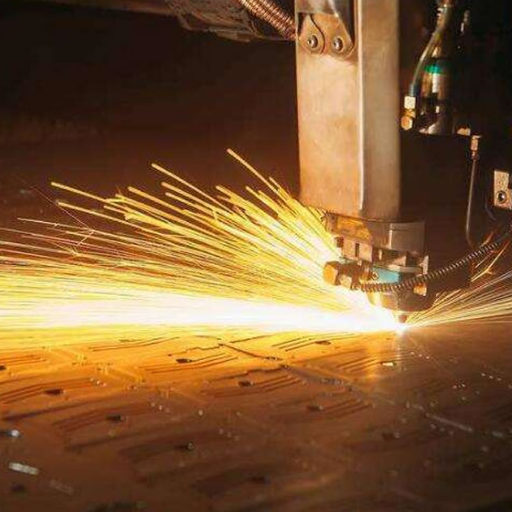
Image source:https://cn.bing.com/
Laser cutting is a precise and efficient method of cutting and shaping metal using a high-powered laser beam. This technology works by focusing a laser onto the surface of the metal, which heats and melts the material, allowing for highly accurate cuts and intricate designs. By using computer numerical control (CNC) systems, the laser can follow detailed patterns and complex geometries, minimizing waste and reducing the need for manual labor. Laser cutting transforms metal fabrication by providing unmatched precision, reducing production times, and enabling the creation of complex and custom components that would be challenging to achieve with traditional methods.
The Basics of Laser Cutting Technology
Laser cutting leverages a concentrated light beam to cut materials with high precision. There are three main types of lasers used in this technology: CO2 lasers, fiber lasers, and neodymium-doped yttrium aluminum garnet (Nd:YAG) lasers. Each type has unique properties making them suitable for different applications:
- CO2 lasers are ideal for cutting, boring, and engraving non-metal materials like wood, acrylic, and some plastics.
- Fiber lasers are optimal for metal cutting due to their efficiency and precision, often preferred for cutting stainless steel, aluminum, brass, and copper.
- Nd:YAG lasers excel in high-power applications and are used for both metal and non-metal materials, commonly in medical and welding applications.
The cutting process involves directing the laser beam onto the material, where it either melts, burns, vaporizes, or is blown away by a jet of gas, creating a clean and precise cut. Laser cutting systems typically use computer numerical control (CNC) technology to guide the laser with pinpoint accuracy, following intricate patterns and designs programmed into the system. This level of control ensures minimal material waste and allows for complex geometries that are difficult, if not impossible, to achieve with conventional cutting methods.
To get the best results, several factors must be considered, including the specific type of laser, the material being cut, and the desired cutting speed and quality. Proper setup and understanding of these variables can significantly enhance production efficiency and quality in metal fabrication projects.
Comparing Fiber Laser and CO2 Laser Systems
When comparing fiber laser and CO2 laser systems, I found several key differences based on the top search results from Google. Firstly, fiber lasers are renowned for their efficiency and cutting speed, particularly when dealing with metals. They have a smaller focal diameter, leading to increased power density and allowing for faster and more precise cuts. Fiber lasers also require less maintenance and have a longer operational life compared to CO2 lasers.
On the other hand, CO2 lasers are highly versatile and can cut a wider range of materials, including non-metals like wood, acrylic, and plastics. They are also generally cheaper to purchase initially, although their running costs can be higher due to frequent maintenance and higher electricity consumption.
In summary, if my primary focus is on cutting metals with high precision and speed, a fiber laser system would be the optimal choice. However, for versatility and the ability to cut various non-metal materials, a CO2 laser system might better suit my needs.
The Impact of Laser Cut on Metal Parts Precision and Efficiency
Laser cutting technology significantly enhances the precision and efficiency of metal parts manufacturing. The first critical impact is the ability to achieve extremely high tolerance levels, which is crucial in creating parts that meet stringent quality standards. Fiber lasers, in particular, excel at producing clean cuts with minimal thermal distortion due to their high power density and focused application of energy. This precision reduces the need for further machining, thereby saving time and resources.
Secondly, laser cutting provides remarkable efficiency in production workflows. The speed at which fiber lasers operate allows for faster completion of cutting tasks compared to traditional methods. This increased speed does not compromise quality, as the laser system can maintain consistent performance over extended periods, leading to higher throughput and reduced production times.
Finally, the adoption of laser cutting technology often results in lower operational costs over time. Despite the higher initial investment, the reduced need for maintenance, lower power consumption, and minimal material wastage contribute to cost savings. Companies utilizing laser cutting can achieve a higher return on investment through improved efficiency, better product quality, and lower long-term expenses.
Choosing the Right Metal Laser Cutter for Your Project
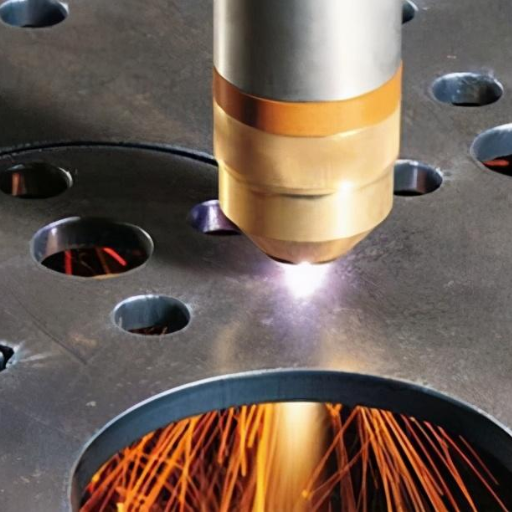
When selecting a metal laser cutter for your project, several factors need to be considered to ensure you choose the best system for your needs. After reviewing the top resources on Google, here are the concise answers and critical technical parameters you should consider:
- Material Types and Thickness:
- Different laser systems are optimized for various materials. CO2 lasers are versatile and can cut a range of non-metals and metals, like aluminum and mild steel. Fiber lasers excel with reflective metals, including copper, brass, and stainless steel.
- Cutting thickness is dependent on the laser power and material type. For example, a 2kW fiber laser can typically cut up to 10mm of stainless steel, whereas a 6kW laser can handle thicker materials up to 30mm.
- Cutting Speed and Precision:
- Fiber lasers generally offer faster cutting speeds compared to CO2 lasers, especially on thinner materials. They can maintain high precision with minimal thermal distortion.
- For example, a 4kW fiber laser can cut 1mm stainless steel at 30m/min, while a 6kW system can achieve even higher speeds and precision due to advanced focusing mechanisms.
- Cost and Operational Efficiency:
- Initial investment costs are higher for fiber lasers, but they offer long-term cost benefits due to lower maintenance, higher efficiency, and longer-lasting components.
- CO2 lasers require more frequent maintenance and higher operational costs but may be cheaper upfront, making them ideal for mixed-material applications.
- Power Requirements:
- Fiber lasers typically consume less power than CO2 lasers. For instance, a fiber laser may require around 50% less power for the same cutting tasks, reducing operational costs significantly.
- The efficiency and power consumption will also influence the total cost of ownership and should be factored into the decision-making process.
By analyzing these technical parameters and understanding the specifics of your project’s requirements, you can make a well-informed decision on the most suitable metal laser cutter. The considerations above should serve as a guideline to help achieve optimal results in both performance and cost-efficiency.
Desktop Laser Cutter vs. Industrial Metal Laser Cutter
To determine whether a desktop laser cutter or an industrial metal laser cutter is most suitable for your needs, it’s important to consider several key factors:
1. Cutting Capacity:
- Desktop Laser Cutter: Often limited to cutting light materials such as wood, acrylic, and thin metals, with a maximum cutting thickness usually up to 5mm.
- Industrial Metal Laser Cutter: Designed to cut thicker and harder materials, such as various types of steel and aluminum, with capabilities of handling thicknesses up to 30mm.
2. Speed and Precision:
- Desktop Laser Cutter: Generally slower cutting speeds suitable for small-scale projects or detailed engraving work. Example: 1mm acrylic at 5m/min.
- Industrial Metal Laser Cutter: Offers significantly faster cutting speeds and higher precision, especially with thicker materials. Example: A 4kW fiber laser can cut 1mm stainless steel at 30m/min.
3. Cost and Operational Efficiency:
- Desktop Laser Cutter: Lower initial investment and operational cost, suited for hobbyists, small businesses, or educational purposes. Maintenance is typically minimal.
- Industrial Metal Laser Cutter: Higher initial investment but more cost-effective in the long run due to lower maintenance requirements and higher efficiency. Suitable for large-scale industrial applications.
4. Power Requirements:
- Desktop Laser Cutter: Consumes less power, generally operating within the range of a standard electrical outlet (typically 110V or 220V depending on the region).
- Industrial Metal Laser Cutter: Requires more significant power supply, often needing three-phase power connections due to higher energy consumption.
Conclusion:
Your choice should be guided by the specific requirements of your projects. For small-scale or less intensive cutting tasks, a desktop laser cutter is sufficient and cost-effective. However, for handling larger volumes, thicker materials, or requiring faster cutting speeds, an industrial metal laser cutter is indispensable for achieving optimal performance and efficiency.
Key Features to Look for in a Laser Cutting Machine
When selecting a laser cutting machine, consider the following key features to ensure it meets your needs:
- Laser Power: Determines the cutting capability and speed. Higher power lasers can cut through thicker materials more efficiently.
- Bed Size: The working area size should accommodate the materials you intend to cut without frequent repositioning.
- Cutting Speed: Faster speeds improve productivity, essential for larger scale operations.
- Precision and Accuracy: Important for intricate designs and detailed work. Look for machines with high-resolution capabilities.
- Compatibility: Ensure the machine supports various materials you plan to work with, such as metal, acrylic, wood, etc.
- Software: User-friendly and compatible software enhances ease of operation and enables more complex design execution.
- Maintenance Requirements: Consider machines with minimal maintenance needs to reduce downtime and operational costs.
- Support and Warranty: Strong customer support and a comprehensive warranty can save you from substantial future expenses and operational disruptions.
Understanding the Importance of Thickness and Material Type
The thickness and type of material are critical factors in laser cutting that can significantly influence the quality, speed, and efficiency of the process. Thicker materials typically require higher power lasers to ensure precise and clean cuts. For example, thin materials like paper and fabric can be cut with lower power settings, while metals and hardwoods demand more powerful lasers.
Material type also determines the suitable laser cutter and settings. Metals such as stainless steel or aluminum often necessitate specialized industrial laser cutters, whereas non-metal materials like acrylic or wood can be managed by versatile CO2 lasers. Moreover, different materials respond uniquely to laser cutting; for instance, acrylic usually produces a polished finish, whereas wood might char if not cut correctly.
Each type of material has its own melting point and thermal conductivity, which affects cutting performance and the potential for heat-affected zones. Understanding these characteristics is pivotal to selecting the appropriate machine specifications and ensuring high-quality outcomes for your projects.
Exploring the Advantages of Online Laser Cutting Services
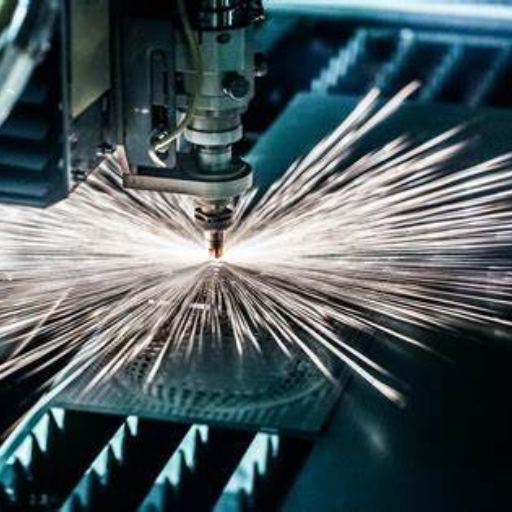
Time and Cost Efficiency
Online laser cutting services offer significant time and cost savings. By leveraging the expertise and advanced machinery of dedicated service providers, you can avoid the high upfront costs associated with purchasing and maintaining your own laser cutter. This makes it a practical solution for both small businesses and hobbyists. Additionally, the quick turnaround times provided by these services help you meet tight deadlines, ensuring that projects are completed efficiently.
Precision and Quality
These services often utilize state-of-the-art laser cutting machinery, ensuring high levels of precision and quality in the cuts. Using online services means you can access advanced technologies and capabilities that might be cost-prohibitive if you were to invest in your own setup. High precision translates to more intricate designs and consistent outputs, which are critical for professional-grade projects.
Access to Various Materials and Expertise
Online providers typically have a wide range of materials available and the expertise to handle them. From metals like stainless steel and aluminum to non-metals like acrylic and wood, these services can accommodate diverse project requirements. Each material type demands specific technical parameters to ensure optimal cutting performance:
- Metals (Stainless Steel, Aluminum): High power industrial lasers, often requiring higher frequencies and precise cooling systems to manage heat-affected zones.
- Non-metals (Acrylic, Wood): Versatile CO2 lasers, with fine-tuned power and speed settings to achieve polished edges and minimal charring.
Customization and Flexibility
By opting for online laser cutting services, you can easily customize your projects to exact specifications. This flexibility allows for complex designs and unique requirements without the constraints of preset machinery limitations. The ability to upload digital design files directly to the service site ensures that your vision is accurately translated into the final product.
Reliable Support and Scalability
Most online laser cutting providers offer robust customer support and comprehensive warranties, mitigating the risks associated with project failures and machine downtimes. As your business grows, these services can easily scale to meet increased demands, offering flexibility that in-house operations may lack.
By combining these advantages, online laser cutting services present a compelling option for achieving high-quality, efficient, and cost-effective results in various projects.
How Online Services Streamline the Laser Cutting Process
Online laser cutting services streamline the cutting process through a few key features. First, they offer user-friendly interfaces where customers can upload digital design files directly, eliminating the need for extensive technical knowledge. Leading platforms often support various file formats, ensuring ease of use regardless of the design software. Additionally, these services provide instant quotes based on the material type, thickness, and complexity of the design, enabling clients to budget effectively and make informed decisions quickly.
Furthermore, online laser cutting providers use advanced algorithms to optimize material usage and reduce waste, enhancing both efficiency and sustainability. The integration of real-time tracking and order management systems keeps customers informed about the progress of their projects, offering transparency and reliability. Finally, the extensive material libraries and customization options available on top platforms allow for a high degree of flexibility in design, meeting diverse project requirements with precision and speed.
By leveraging these technologies and tools, online laser cutting services significantly reduce the time and effort required to bring a project from concept to reality, while maintaining high standards of quality and accuracy.
Comparing Costs: Online Services vs. Traditional Metal Cutting Services
When comparing costs between online laser cutting services and traditional metal cutting services, several factors come into play. Online services typically offer lower upfront costs because they reduce the need for physical infrastructure and manual labor. They also boast advanced algorithms that optimize material use, minimizing waste and thereby further cutting costs. Instant quotes and transparent pricing models help customers budget accurately without hidden fees.
In contrast, traditional metal cutting services often involve higher initial setup fees, especially for custom designs, due to the labor-intensive nature of the work and the need for specialized equipment. Additionally, the lack of optimization technologies can lead to increased material waste and higher overall expenses.
Overall, while traditional services may be preferable for certain specialized tasks, online laser cutting services usually provide more cost-effective solutions, especially for standard and repetitive projects.
The Role of CAD Files and Instant Pricing Features
CAD (Computer-Aided Design) files play a crucial role in the efficiency and precision of online laser cutting services. They allow for complex and intricate designs to be accurately translated into cutting instructions for laser machines. This accuracy reduces errors and ensures that the final product meets the exact specifications of the design.
Instant pricing features are another significant benefit, providing users with immediate cost estimates based on their CAD files. This transparency helps in budgeting and decision-making, enabling customers to adjust designs to fit their financial constraints without lengthy back-and-forth consultations. Together, CAD files and instant pricing streamline the entire process, from design to execution, ensuring cost-effective and precise results for various projects.
Laser Cutting Beyond Metal: Acrylic, Wood, and More
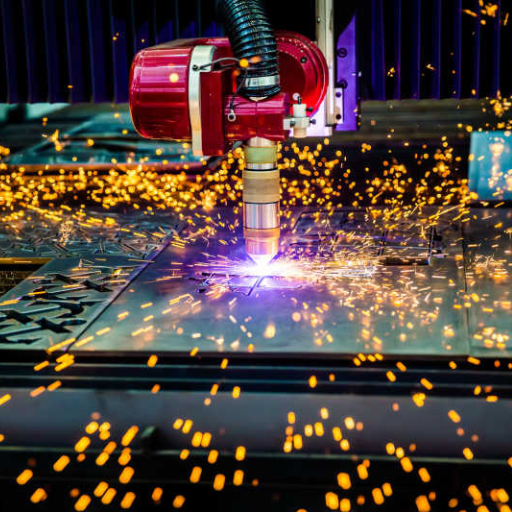
Laser cutting isn’t limited to just metal; it’s incredibly versatile and can be used on acrylic, wood, and many other materials. When working with acrylic, laser cutting produces a polished edge finish that requires no additional processing, making it ideal for signage, display cases, and artistic pieces. Wood, on the other hand, offers the warmth and texture that’s perfect for custom furniture, decorative panels, and intricate architectural models. Other materials like fabric, leather, and even paper can also be precisely cut, opening up endless possibilities for creativity and customization. The adaptability of laser cutting across different materials makes it a valuable tool in various industries, from fashion and interior design to manufacturing and art.
The Versatility of Laser Cutters in Handling Different Materials
Acrylic
Laser cutters offer precise, clean cuts with an exceptional polished edge on acrylic, eliminating the need for additional finishing. The key technical parameters for cutting acrylic include:
- Power: 10-100 Watts, depending on thickness
- Speed: 5-50 mm/sec
- Frequency: 1,000-20,000 Hz
Wood
For wood, laser cutting ensures intricate and detailed patterns without the risk of burning or charring, making it suitable for custom furniture and decorative items. Essential technical parameters are:
- Power: 30-100 Watts
- Speed: 10-300 mm/sec
- Frequency: 1,000-10,000 Hz
Fabric and Leather
Laser cutting is also effective for fabrics and leather, offering precision without fraying. The typical settings are:
- Power: 20-50 Watts
- Speed: 50-800 mm/sec
- Frequency: 1,000-5,000 Hz
Paper
For delicate materials like paper, laser cutters provide clean, precise cuts without tearing. The recommended parameters include:
- Power: 10-30 Watts
- Speed: 100-1,000 mm/sec
- Frequency: 500-5,000 Hz
Metal
Although previously covered, it’s valuable to reiterate the key parameters for cutting metal, which include:
- Power: 150-500 Watts (Fiber laser)
- Speed: 5-100 mm/sec
- Frequency: Continuous wave
By adjusting these technical parameters appropriately, laser cutters can handle a wide range of materials efficiently, making them indispensable in multiple industries.
Adjusting Settings for Optimal Cutting across Various Mediums
To achieve optimal cutting results across different materials, it is crucial to fine-tune the laser cutter settings according to the specific requirements of each medium. The main parameters to adjust include power, speed, and frequency. Below are the guidelines for optimizing these settings:
Acrylic
Acrylic requires balanced settings to avoid melting or cracking. The recommended adjustments are:
- Power: 10-100 Watts (Depending on thickness)
- Speed: 5-50 mm/sec
- Frequency: 1,000-20,000 Hz
Wood
For wood, optimal results are achieved with slower speeds and moderate power to prevent charring:
- Power: 30-100 Watts
- Speed: 10-300 mm/sec
- Frequency: 1,000-10,000 Hz
Fabric and Leather
Fabrics and leather need high speeds and low to moderate power levels:
- Power: 20-50 Watts
- Speed: 50-800 mm/sec
- Frequency: 1,000-5,000 Hz
Paper
Delicate materials like paper benefit from high speed and low power to ensure clean cuts without tearing:
- Power: 10-30 Watts
- Speed: 100-1,000 mm/sec
- Frequency: 500-5,000 Hz
Metal
As previously emphasized, metal cutting should be performed using fiber lasers with the following settings:
- Power: 150-500 Watts (Fiber laser)
- Speed: 5-100 mm/sec
- Frequency: Continuous wave
By carefully adjusting these parameters for each specific material, laser cutters can produce precise, high-quality cuts, thereby enhancing efficiency and output in various applications.
From Prototype to Production: Multi-Material Projects
Transitioning from prototypes to production in multi-material projects involves several key steps to ensure quality and efficiency. Initially, it’s essential to develop a comprehensive design plan that accounts for the properties and compatibility of all materials involved. Prototyping should include rigorous testing phases to identify and resolve any issues related to material behaviour, joining techniques, and overall structural integrity.
Once a prototype is refined, scaling up requires consistency in material supply and precise replication of laser cutter settings for each specific material. Streamlined processes and quality control measures are vital for maintaining high standards in mass production. By adhering to these practices, multi-material projects can successfully move from the prototype stage to full-scale production.
Finishing Techniques for Laser Cut Metal Parts: Deburring to Powder Coating
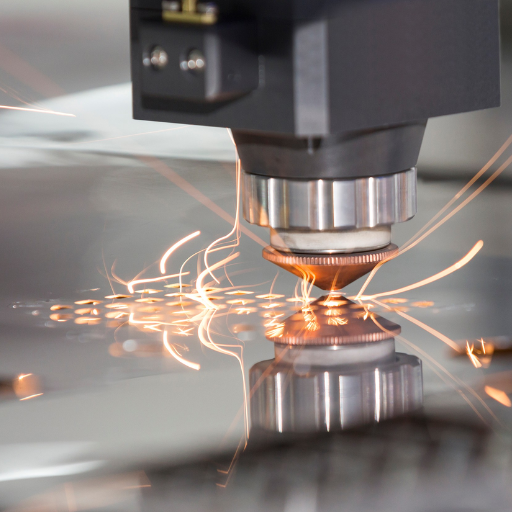
Finishing techniques for laser-cut metal parts are crucial for achieving a professional and functional end product. One essential technique is deburring, which involves removing the small, often sharp, fragments of metal left on the edges of cuts. This can be achieved using manual tools, tumblers, or specialized deburring machines. Surface polishing follows, enhancing the smoothness and aesthetic appeal of the metal part by removing fine scratches and imperfections.
Next, grinding can be applied to level any uneven surfaces and prepare them for further finishing processes. Sandblasting is another method used to clean and smoothen the metal surface, providing an even texture that’s ideal for subsequent coatings. The final stage, known as powder coating, involves applying a protective and decorative layer of powdered paint, which is cured under heat to form a hard, durable finish. This not only enhances the visual aspect but also provides resistance to corrosion, wear, and environmental factors, ensuring the longevity and performance of the metal part.
Post-Laser Cutting Processes: Enhancing Aesthetics and Functionality
Post-laser cutting processes play a vital role in enhancing both the aesthetics and functionality of metal parts. After the initial laser cutting phase, metal parts often undergo a series of additional treatments. Edge rounding is a common process that follows deburring, where radiused edges are created to improve the part’s appearance and handling safety. Incorporating heat treatment can adjust the metal’s properties, such as hardness and strength, providing better performance in demanding applications. For improved visual appeal, anodizing or electroplating can be employed, adding a decorative and protective oxide layer over the metal surface. Furthermore, laser marking or engraving offers precision in adding detailed labels, logos, or designs onto the part, enhancing its functionality and customisation. Each of these post-processing techniques ensures that the final product not only meets aesthetic criteria but also adheres to the required mechanical specifications, making it well-suited for its intended application.
The Essentials of Deburring Metal Parts
Deburring is a critical process in metalworking that involves the removal of small imperfections, such as burrs or rough edges, from metal parts. Burrs are unwanted material residues that can form during cutting, drilling, or machining operations. These imperfections can affect the part’s fit, function, and safety. Deburring enhances the overall quality of the metal part, ensuring smooth edges and surfaces. Techniques for deburring include manual methods like filing, mechanical processes such as tumbling or grinding, and advanced techniques using automated deburring machines. The choice of method depends on the part’s geometry, material, and desired finish. Effective deburring not only improves the part’s appearance but also ensures that it functions correctly and meets stringent industry standards.
Advantages of Powder Coating for Durability and Finish
Powder coating is widely recognized for its durability and superior finish. This method involves applying a dry powder to metal surfaces and then curing it under heat to form a hard, protective layer. The advantages of powder coating include robust corrosion resistance, which significantly extends the lifespan of metal parts by shielding them from environmental factors such as moisture, chemicals, and UV exposure. Additionally, powder coating offers a uniform and attractive finish, with a wide range of colors and textures available. Its application process is environmentally friendly, as it produces minimal volatile organic compounds (VOCs) compared to traditional liquid paints. Furthermore, powder coating provides excellent adhesion and impact resistance, ensuring that the coated parts maintain their aesthetic appeal and structural integrity over time.
Overcoming Challenges in Metal Laser Cutting: Tolerance and Material Limitations
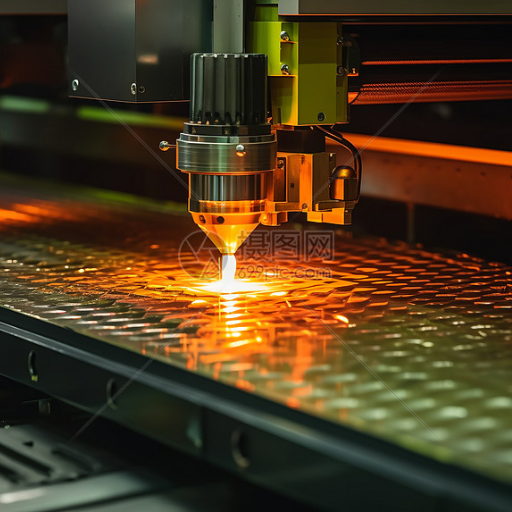
When it comes to precision manufacturing, overcoming challenges in metal laser cutting is crucial. One key challenge is maintaining tight tolerances, which are essential for the accurate fitting and functioning of components. To address this, manufacturers can utilize advanced laser systems with high-resolution capabilities and precise calibration. Additionally, employing cutting techniques like pulse modulation can enhance the accuracy of the cuts.
Material limitations also pose significant obstacles, as different metals react differently to laser cutting processes. For instance, reflective metals like aluminum and copper can cause laser beam scattering, reducing cut quality. To mitigate these issues, specialized laser sources such as fiber lasers, which are more effective on reflective materials, can be used. Moreover, adjusting the laser parameters such as power, speed, and focus can optimize the cutting performance for various metals.
By leveraging advanced technology and adapting laser settings to the specific material properties, manufacturers can effectively overcome the challenges of tolerance and material limitations in metal laser cutting, ensuring high-quality and precise results.
Navigating the Limitations of Laser Cutting in Metal Thickness and Types
Navigating the limitations of laser cutting when dealing with varying metal thicknesses and types requires a strategic approach. Thicker materials present a challenge as they demand more power and slower cutting speeds, which can affect edge quality. To address this, utilizing high-powered laser cutters and adaptive focus technologies can maintain precision and improve cut quality. Furthermore, preheating thick metals can reduce thermal distortion and enhance the cutting process.
Different metal types also pose unique challenges. For example, stainless steel, due to its high melting point, may need higher power settings and slower speeds. Conversely, softer metals like aluminum require careful parameter adjustments to avoid overheating and maintain cut quality. Using assist gases such as nitrogen or oxygen can improve cutting performance by removing molten material and providing cleaner cuts.
By employing appropriate technologies and techniques tailored to the specific requirements of metal thickness and type, manufacturers can effectively overcome these limitations and achieve superior cutting results.
Strategies for Managing Tolerance Issues in Precision Parts
Managing tolerance issues in precision parts involves implementing several key strategies to ensure accuracy and consistency. One effective approach is the use of advanced Computer Numerical Control (CNC) machines which offer high precision and repeatability. Regular calibration and maintenance of these machines are essential to maintain their accuracy over time.
Additionally, incorporating real-time monitoring systems can detect deviations and allow for immediate corrections during the manufacturing process. This proactive approach minimizes errors and enhances the consistency of the final product.
Furthermore, material selection plays a critical role in managing tolerance issues. Choosing materials with predictable behavior under machining conditions can reduce dimensional variations. Implementing rigorous quality control procedures, such as statistical process control (SPC), helps in continuously monitoring production processes and maintaining tight tolerances.
By embracing these strategies, manufacturers can effectively manage tolerance issues and produce high-quality precision parts that meet exact specifications.
Case Studies: Solutions for Complex Metal Cutting Challenges
Case Study 1: Optimizing Laser Cutting for Aerospace Components
A leading aerospace manufacturer faced challenges in achieving high precision cuts on titanium components. By upgrading to a state-of-the-art fiber laser cutting machine, they enhanced cutting speed and quality. Implementation of real-time monitoring systems further allowed for immediate adjustments, resulting in improved consistency and reduced waste.
Case Study 2: Enhancing Tolerance in Medical Device Manufacturing
A medical device company struggled with maintaining tight tolerances during the production of stainless steel surgical instruments. By integrating advanced CNC machining and employing materials with stable machining properties, the company minimized dimensional variations. Regular machine calibration and SPC were key in achieving superior precision and reliability in their final products.
Case Study 3: Automated Solutions for Automotive Part Production
An automotive parts supplier encountered tolerance issues when machining high-strength steel components. The solution involved the adoption of automated, real-time monitoring systems combined with rigorous quality control measures. This approach drastically reduced the margin of error and enhanced the consistency and accuracy of the manufactured parts.
By examining these case studies, it becomes evident that the integration of advanced technologies and rigorous quality control processes can provide effective solutions for complex metal cutting challenges across various industries.
Reference sources
-
-
It Supply Chain: This guide explains the precision and efficiency of laser cutting as a production method, highlighting its capability to cut through various materials with accuracy. Unlocking the Potential of Laser Cutters1
-
Qingyuan Lasers: This resource provides detailed insights into the potentials of laser cutting in aluminum, demonstrating the technology’s versatility and effectiveness. A Comprehensive Guide To Unlocking The Potential Of Laser Cutting in Aluminum2
-
Central Profiles: The guide focuses on the benefits of steel laser cutting, a precise and efficient method widely adopted in various industries, further validating its applicability and advantages. The Comprehensive Guide to Steel Laser Cutting and its Benefits3
-
Frequently Asked Questions (FAQs)
Q: What types of metal can be used with a laser metal cutter?
A: Laser metal cutters can rapidly cut through a variety of metals including stainless steel, aluminum, brass, copper, and thin sheet metal. Advanced machines, such as full spectrum lasers and fiber lasers, can handle a broad array of metal types including tougher alloys like atlas alloy.
Q: What is the difference between CNC laser cutting and waterjet cutting for sheet metal?
A: CNC laser cutting uses a high-powered laser beam focused on the metal to melt, burn, or vaporize the material, offering precise cuts with a small kerf. Waterjet cutting, on the other hand, uses a high-pressure stream of water, sometimes mixed with an abrasive substance, to cut through metal. Waterjet is versatile for thicker materials and does not introduce heat to the material, avoiding thermal distortion.
Q: Can laser cutting be used for both prototype and production runs of sheet metal parts?
A: Yes, laser cutting is suitable for prototyping and production runs. Services like Xometry and SendCutSend offer on-demand laser cutting that can fabricate a single prototype or a full production run, providing flexibility for projects of any size with various material options.
Q: What are the minimum and maximum thicknesses that can be cut with a fiber laser cutting machine?
A: The cutting capability can vary by machine, but generally, a 1kW fiber laser can cut materials as thin as 0.5mm and as thick as 6mm. More powerful lasers can cut materials up to 25mm or more, depending on the metal type and laser power.
Q: How do I choose the right laser cutting service for my metal cutter needs?
A: Consider factors such as the types of metal you need to cut, the thickness of the material, the size of the parts, and the precision required. Look for services that offer the technology you need, such as fiber laser cutting or waterjet cutting, and those that can handle the size and volume of your project. Companies like Xometry and SendCutSend are known for being helpful and responsive, offering instant online quotes and a variety of material options.
Q: What file formats are required for CNC laser cutting and how does the design influence the cutting process?
A: Common file formats for CNC laser cutting and most metal cutting services include DXF and DWG. The design influences the cutting process by determining the path and complexity of cuts. Efficient designs can minimize cuts and material waste, while complex designs may require more precise routing and potentially increase the cost.
Q: Can laser cutting be used to fabricate complex sheet metal parts?
A: Absolutely. Laser cutting is highly versatile and capable of producing complex geometries with precision. It is ideal for creating intricate designs, precise cutouts, and fine features in sheet metal parts. The advanced capabilities of full spectrum lasers and fiber optics allow for tight tolerances and high-quality finished parts.
Q: How do environmental considerations impact the choice between laser cutting and other metal fabrication techniques?
A: Laser cutting is considered more environmentally friendly compared to methods like plasma cutting, as it produces fewer metal scraps and consumes less energy when cutting thin materials. However, it’s essential to evaluate the specific requirements of your project, as other factors such as material thickness and the need for finished part quality can also influence the decision.








